
10 places in California to see magnificent wildlife in their natural settings
- Share via
Condors roam the Gabilan mountain range. Roosevelt elk herds graze the forests of Humboldt County. In the eucalyptus and cypress groves of Pismo Beach, monarch butterflies cluster during the winter. And on the coast of Morro Bay, sea otters rest their heads along the shore.
California’s diverse landscapes make it one of the best states for viewing wildlife in their natural habitats.
Home to not only the most national parks of any state, the land is flourishing with state parks, natural reserves and wildlife refuges that provide a safe haven for the area’s fauna. Our state also has the most endemic species and federally protected animals in the nation.
Planning your weekend?
Stay up to date on the best things to do, see and eat in L.A.
Up and down the coast of California, you can find opportunities to observe active wildlife — even right here in our backyard — and learn about ways to preserve our natural species. Though this list barely scratches the surface of the state’s vast biodiversity, here are some awe-inspiring animals you can admire (all from a safe and respectful distance), along with the best places and times to view them.
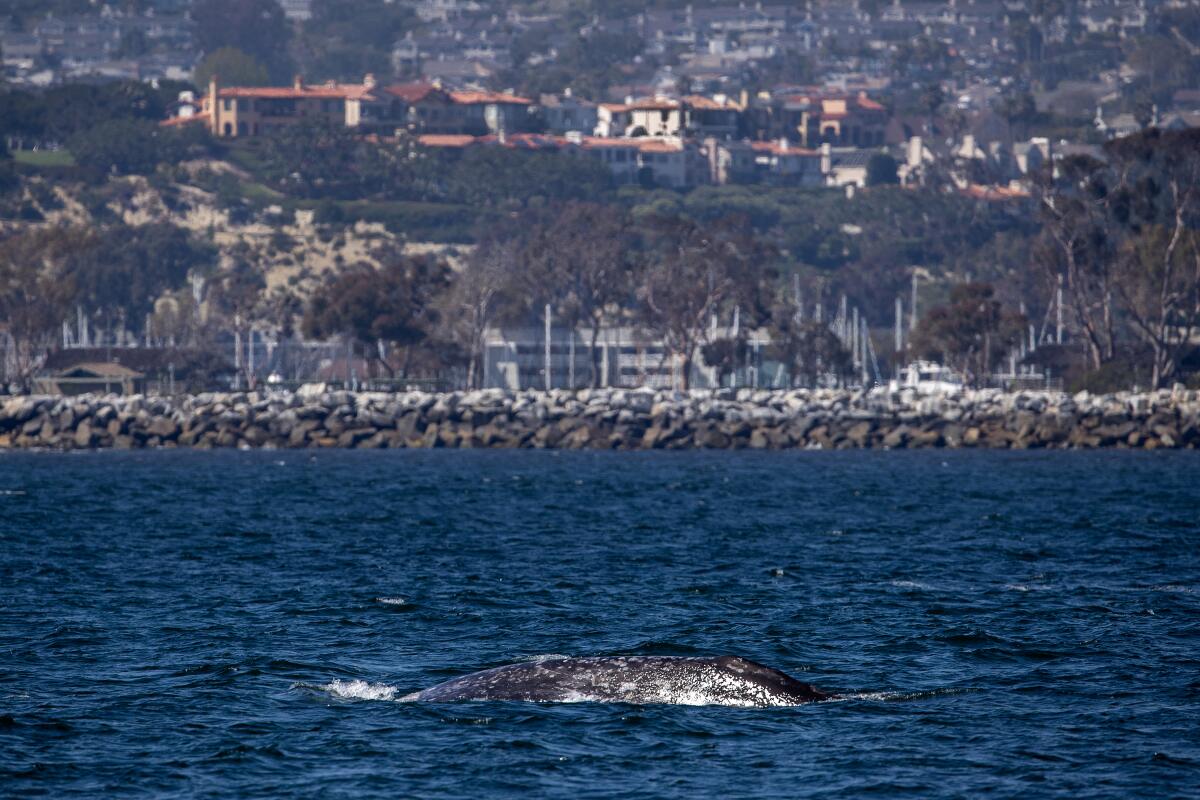
Whales at Dana Point
The experience: The first Whale Heritage Site in the United States is right here in Southern California. Whale watching in Dana Point started when a local fisherman noticed the gray whales, which pass through our waters as they migrate from the arctic to Baja California.
Which season should you go? That’s a hard question. The gray whale migration happens in the winter and peak migration offers you the best chances for spotting a whale. But whale watching in Dana Point is a year-round operation, and the most impressive sights happen in the summer. That’s when blue whales show up. As the largest mammal on Earth, they’re entirely different beasts — and a spectacle to see.
There are several whale watching tour companies to choose from, including Capt Dave’s Dolphin & Whale Watching Safari (marked on this map). During your whale watching excursion, you may also encounter minke whales, humpbacks and plenty of dolphins.
While in the area: You can hike the three miles of trails in the Dana Point Headlands Conservation area that offer coastal views year-round and wildflowers in the spring. Or take a short drive to the historic and charming San Juan Capistrano, home to Mission San Juan Capistrano and Heritage Barbecue, which serves up some of the best barbecue in California.

Roosevelt elk at Prairie Creek Redwoods State Park
The experience: The Roosevelt elk, also known as the Olympic elk, is the largest elk subspecies — each typically weighs around 700 pounds. Once nearly extinct, the elk are thriving again in the Pacific Northwest, thanks to conservation efforts. Here in the Golden State, you can find them in three northern California counties, but they’re easiest to see at Prairie Creek Redwoods State Park in Humboldt County, which has designated viewing areas around Elk Prairie (marked on this map).
While you can spot Roosevelt elk year-round, the best time of year to visit the park is during mating season from August to October. That’s when the bulls will make loud bugling sounds to attract and compete with other bulls. Keep in mind that during this time, you should be wary of encountering a male elk with his harem, as the bulls can be rather defensive. Female elk are also very defensive of their young during calving season in May and June.
While in the area: The one-mile Fern Canyon trail at Prairie Creek Redwoods State Park is an easy hike through canyon walls covered in lush ferns and moss. (Just note that you’ll need to apply for a parking permit and the drive to the trailhead takes you on a bumpy dirt road, so you may want to stick with a higher-clearance vehicle.) Stop at Gold Bluffs Beach on the way.
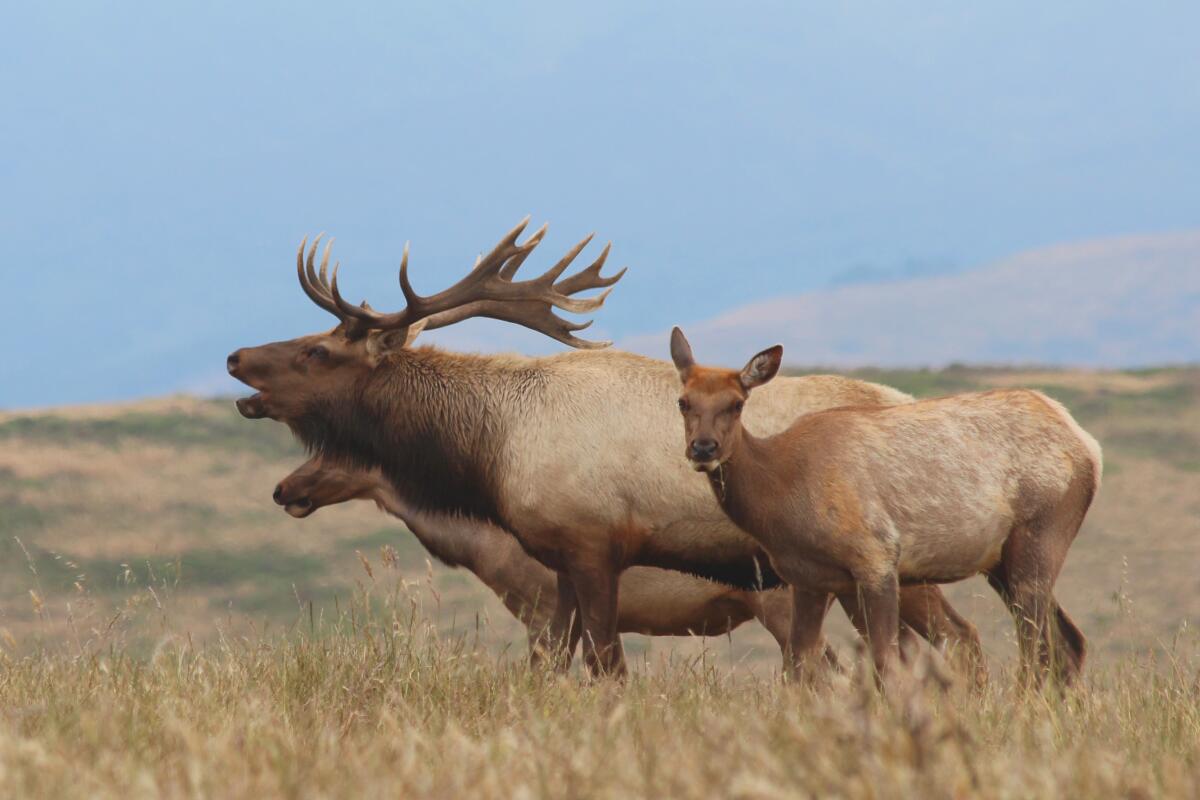
Tule elk at Point Reyes National Seashore
The experience: While Roosevelt elk is the largest elk subspecies in North America, the tule elk is the smallest. And it can only be found in California. These elk once roamed a large swath of the state, but after their near extinction a few habitats were established to reintroduce them. These days, one of the best places to spot the tule elk is Point Reyes National Seashore in Marin County.
Just like the Roosevelt elk, the mating season for the tule elk happens around August to October. During this time, also known as the rut, the elk are more active, bugling, rounding up their harem and fighting off other males.
Hiking the Tomales Point trail (marked on this map) gives you a great chance to spot the tule elk since there’s a reserve in this area. The trail is 9.4 miles round trip but you don’t necessarily need to complete the whole thing for some elk spotting. Sometimes park visitors can even spot them from the road near Drake’s Beach. Like many animals, they’re more active in the morning and early afternoon.
While in the area: Explore the sights in Point Reyes National Seashore from the cypress tree tunnel to the pristine beaches. Point Reyes Station has a handful of small inns and Airbnbs and Bovine Bakery is a popular breakfast spot. If there’s time to spare, a scenic drive up to Marshall for some fresh oysters and seafood at Hog Island Oyster Farm is well worth it.
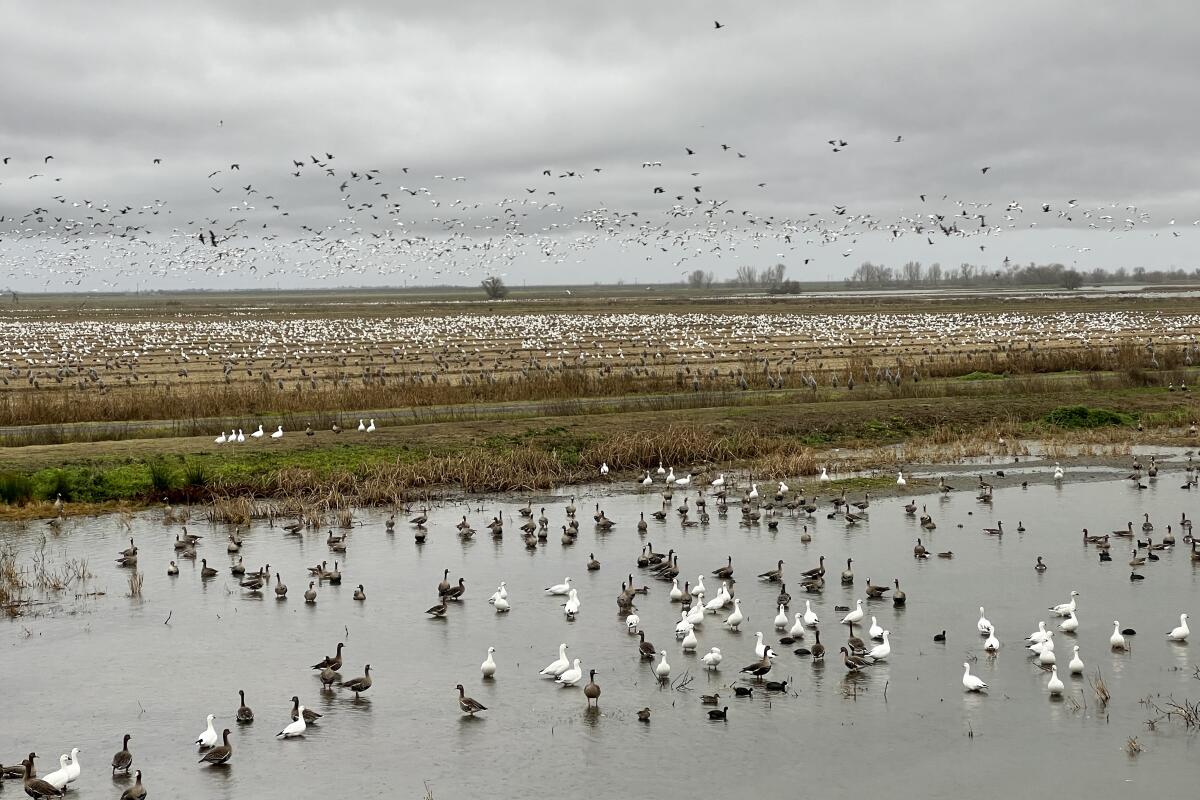
Migratory birds at Merced National Wildlife Refuge
The experience: The thrill of the experience at Merced National Wildlife Refuge lies in the sheer number of bird species you’ll find here. Millions of birds migrate from Alaska to South America each year, and many make stops in California. Every year, about 20,000 sandhill cranes and 60,000 snow geese can be found at the refuge, along with ibis, sandpipers and others.
The wildlife refuge has a self-led driving tour — a 5-mile loop around the wetlands with observation platforms where you can get out of your car and take it all in.
While in the area: Merced County is an agricultural area that grows a lot of nuts and fruits. If you find yourself in Merced in the early spring, you can catch the almond and peach blossoms. Grab some lunch from the Papaya Lady, a Laotian takeout-only spot hidden inside a Mexican carniceria called Nuevo Vallarta.
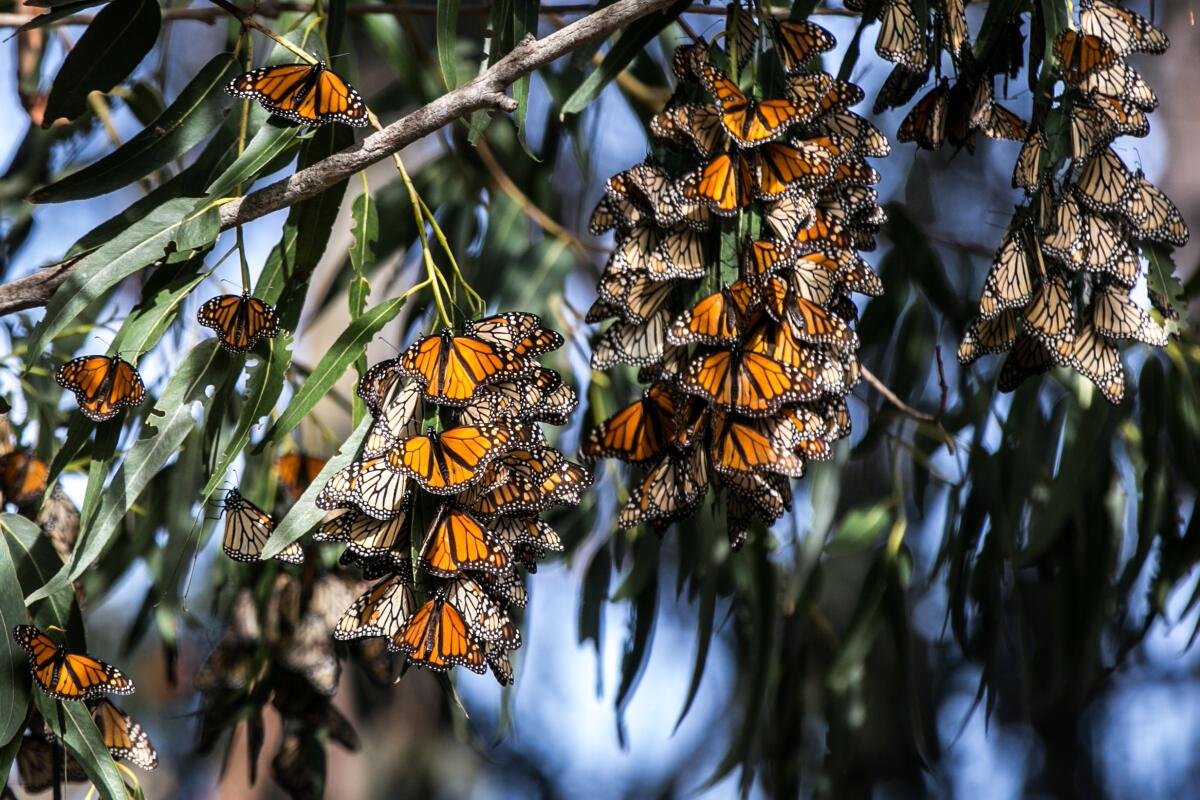
Monarch butterflies at Pismo Beach Monarch Butterfly Grove
The experience: The monarch butterflies’ orange, black-veined wings are unmistakable. At the end of summer, monarchs start making their way from the northern to southern part of North America and spend the winter in monarch groves.
The Pismo Beach Monarch Butterfly Grove is one of California’s larger groves — last year, it welcomed as many as 24,000 monarch butterflies, despite the fact that the general monarch population is dwindling due to milkweed and habitat loss. While it’s fun to watch monarchs flit about, the most impressive sight is the large clusters of monarch butterflies (called roosts) hanging from branches of eucalyptus trees. The monarchs form these roosts in order to stay warm and to protect themselves from the wind.
While in the area: There’s a trail that connects the butterfly grove to the Oceano Dunes Natural Preserve State Park. It’s an easy walk that passes alongside a meadow, but Oceano Dunes is also one of the few places in California where you can drive on the beach, so you may want to take your car there instead. A four-wheel drive vehicle is highly recommended and be sure to let some air out of the tires before driving on the sand.
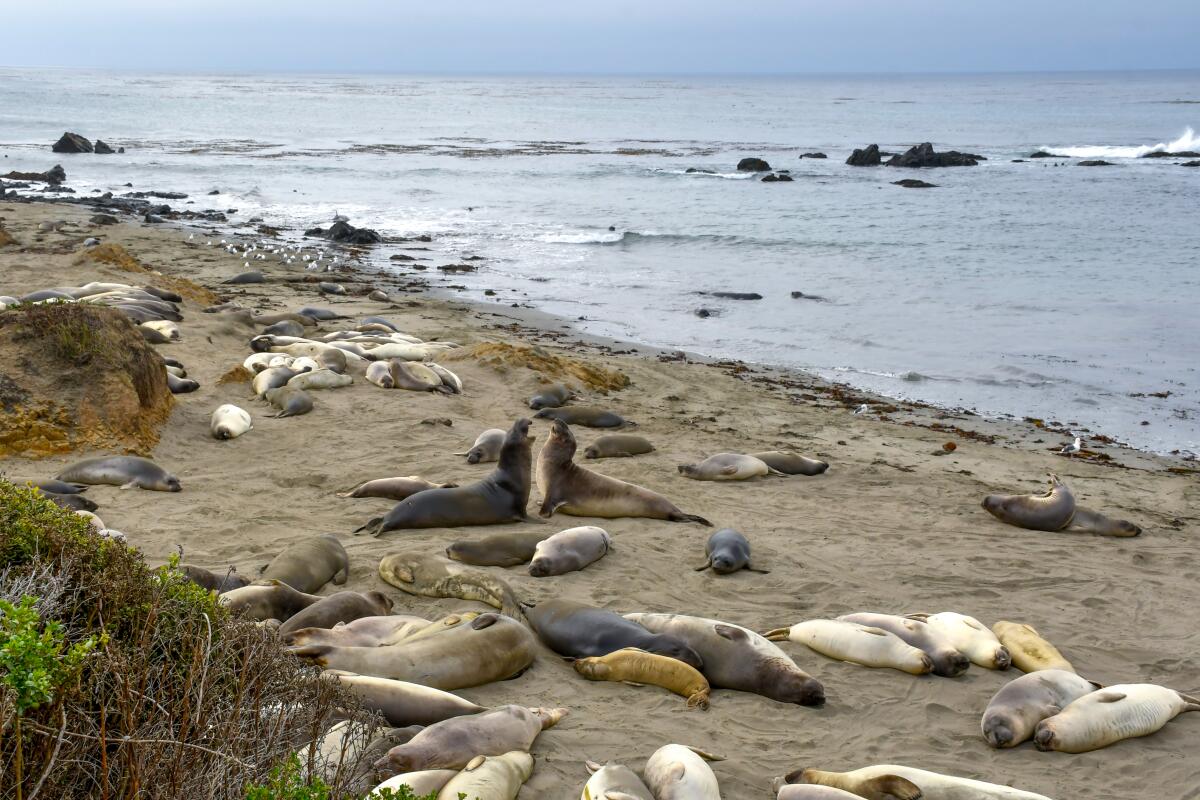
Elephant seals at Piedras Blancas Elephant Seal Rookery
The experience: Piedras Blancas in San Simeon is home to a Northern elephant seal rookery that happens to be one of the easiest to visit. It’s on the mainland so it’s easily accessible by car, it’s free and it’s open to the public all year long.
Elephant seals can be found resting on the beach here year-round, but the mating season in December to March may be the most exciting time to view them. The elephant seals get their name from the large noses of the adult male seals, which they use to make roaring noises as they compete for mates. The competition can sometimes lead to a bloody battle.
As winter progresses, the beach becomes full of seal pups, the result of the previous mating season as elephant seals have a gestation period of 11 months.
While in the area: The main draw of San Simeon is, of course, Hearst Castle. On the drive, keep an eye out for zebras, which are frequently seen from Highway 1 north of San Simeon. The zebras were originally brought to Hearst Castle for William Randolph Hearst’s private zoo. For those driving south, stop in Cambria and grab some olallieberry pie at Linn’s Easy as Pie Cafe or take a cheese- (and goat-) filled tour of Stepladder Creamery.
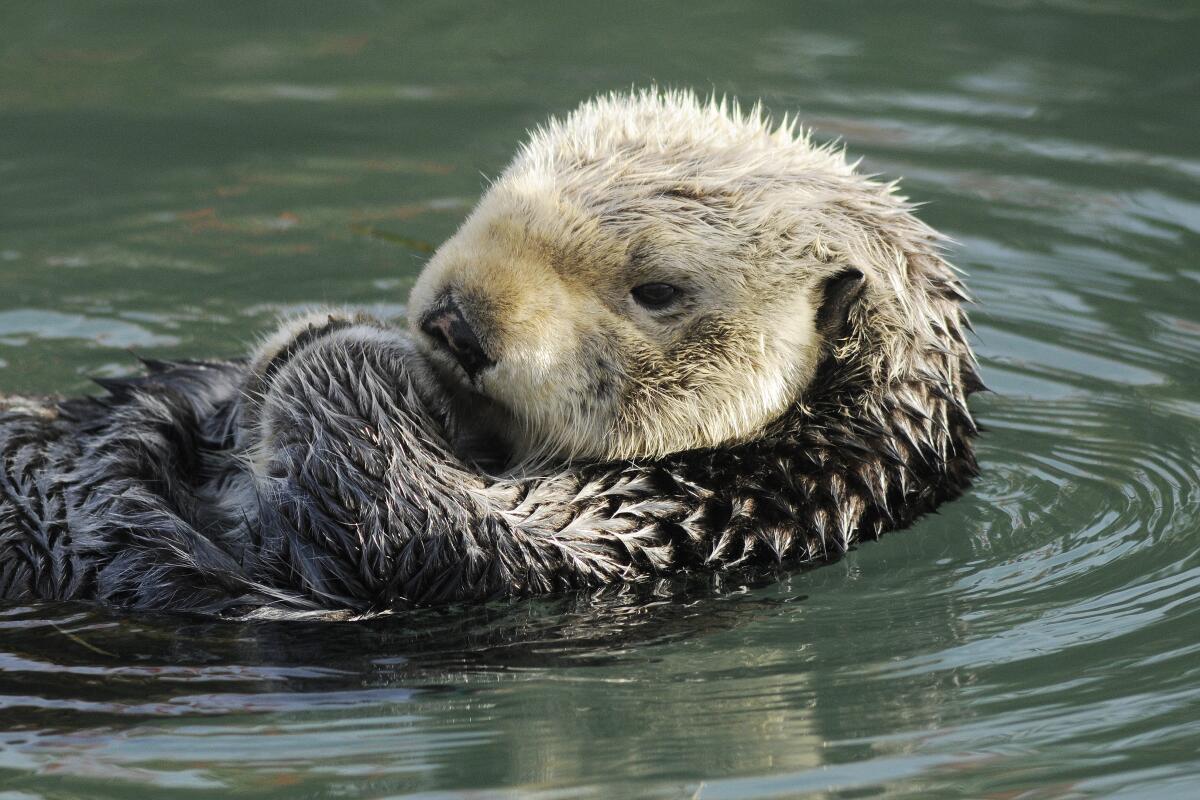
Sea otters in Morro Bay
The experience: Morro Bay’s calm waters make the area an attractive habitat for adorable sea otters. Their population dwindled in the 1900s because they were hunted for their fur, and the numbers declined even more due to oil spills. Thankfully, their numbers have rebounded since the hunting of sea otters was banned in 1911, though they are still considered an endangered species.
On top of their doe-like eyes and fluffy fur, sea otters are particularly sweet to watch because they cuddle or hold hands while they sleep on the water so they don’t drift away. They can be seen any time of year, but more pups are born in the fall and spring, so a spring visit ensures the area is full of them. The South T Pier at the Morro Bay Harbor (marked on this map) is known to be a prime sea otter viewing area with easy parking, but the otters can also be seen from other parts of the harbor.
While in the area: Drive to the base of Morro Rock just off of the harbor. The Morro Rock is a volcanic plug formed around 23 million years ago and is the most distinctive landmark of Morro Bay. Take a kayak tour and check out more wildlife — this time the type that lives under the sea — at the Morro Bay Estuary. For something different, go on a seaweed foraging adventure.
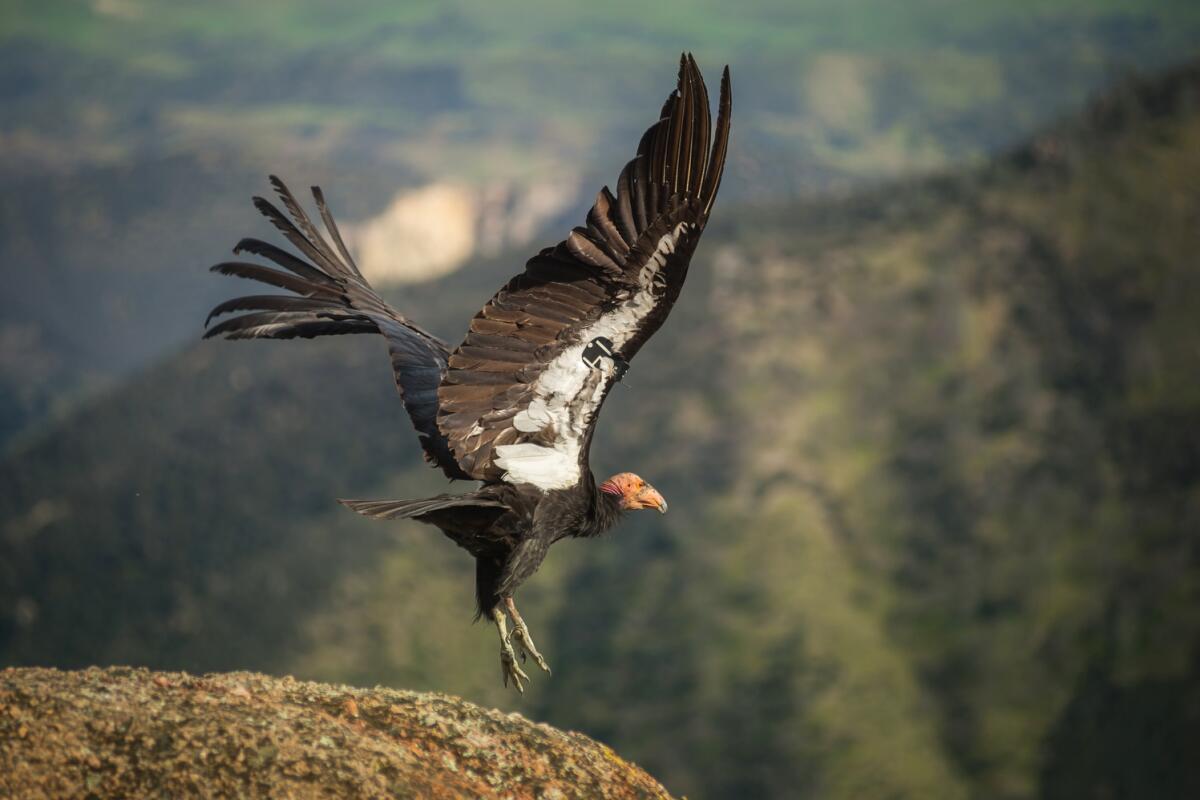
California condors at Pinnacles National Park
The experience: California condors are a rare sight, but they’re easy to recognize if you’re lucky enough to get a close enough look. They’re black with white triangles on the underside of each wing, their heads bald, with colors ranging from pale yellow to orange. And they have the widest wingspan of any North American bird.
In 1987 all wild California condors were captured, but after a captive breeding program, the species was successfully reintroduced to certain areas, including at Pinnacles National Park. Still, these animals are considered critically endangered.
The park manages about two dozen condors, but these vultures have a large territory that extends beyond the park. One of the best trails to hike for a view of the condors is the High Peaks trail (marked on this map) from Bear Gulch. It’s a 6.7-mile loop and is considered a strenuous hike involving some steep and narrow rock steps, but the park has installed handrails at the most dangerous parts of the trail.
While in the area: Pinnacles National Park has other wonderful trails to explore — the Moses Spring trail to Bear Gulch Reservoir passes under a giant boulder hanging between two cliff walls. Outside of the park, explore the smaller wine regions around the area with San Benito County to the east and Salinas Valley to the west of the park’s entrances.
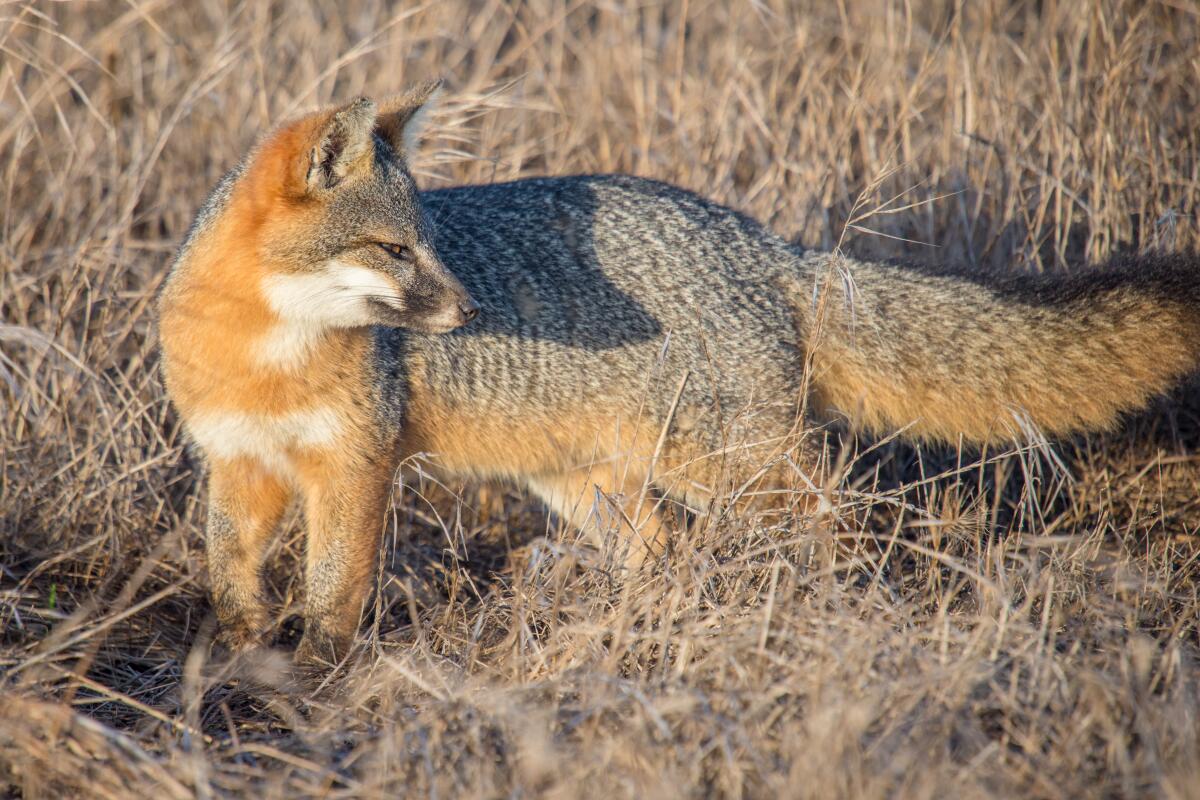
Island foxes on Channel Islands
The experience: The small island fox is endemic to Channel Islands — six of the eight islands, anyway. This fox descended from the gray fox on the mainland, but being isolated on the islands with limited resources has led it to evolve into the smallest fox in North America. Because of the isolation, the island fox is very susceptible to diseases from the mainland, and as more humans have set foot on the islands, its population has dwindled.
The national park manages the fox population by introducing vaccines, running a breeding program and removing predators from the islands. While Santa Cruz Island currently has the highest fox population, Santa Rosa Island (marked on this map) has the highest density of island foxes, so your odds of encountering one are highest there. Each island has its own subspecies of island foxes, though, so why not see them all if you have the time?
While in the area: One of the best things to do at Channel Islands National Park is to kayak and explore sea caves and kelp forests. The Channel Islands Adventure Company runs kayak tours that leave from Santa Cruz Island and they range from short beginner trips to long advanced tours.
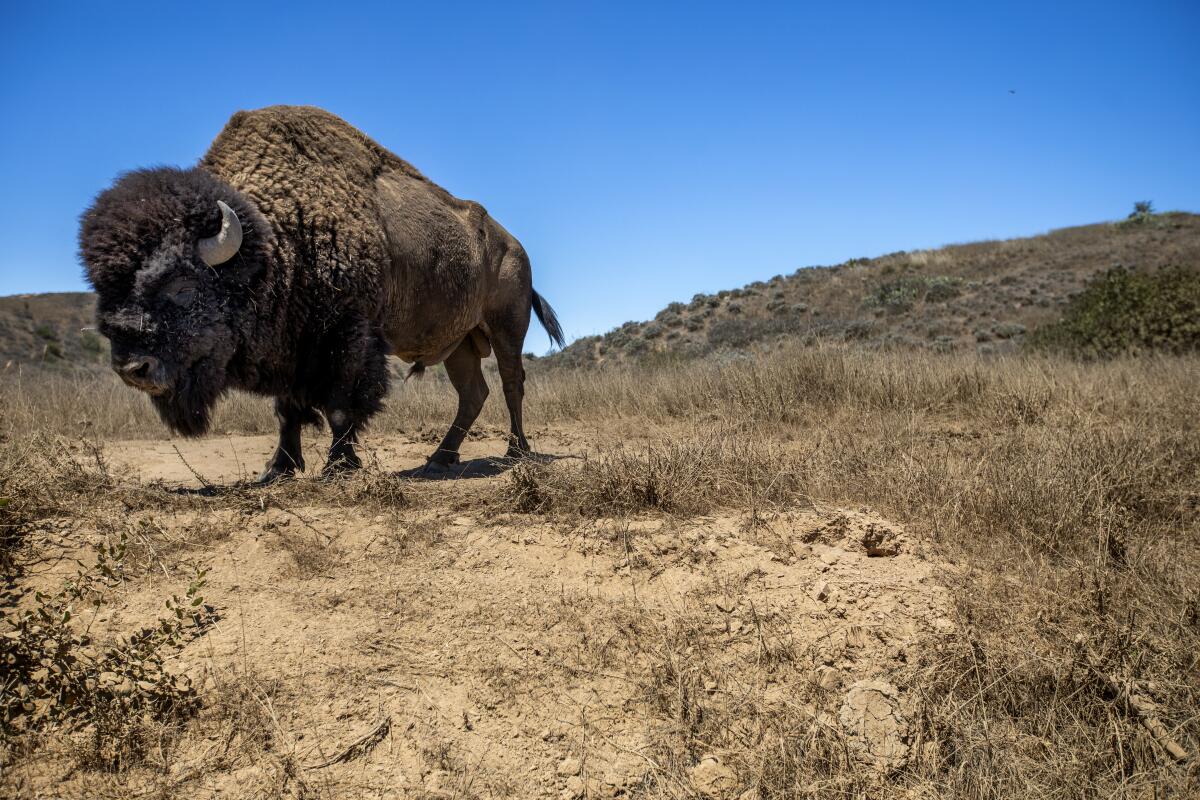
Bison on Catalina Island
The experience: Like many residents of Los Angeles, the bison on Catalina Island are not native to the area, but they’ve lived there long enough to count. The bison were first introduced to the island in 1924 for a western film shoot. While their scenes were cut and they never made it on screen, there on the island they remained.
The bison have become a complicated topic : They’re now an icon of Catalina Island, but they’re still considered an invasive species. Fortunately, their population has been maintained. In 2009, the Catalina Island Conservancy started putting the bison on birth control and now years after the program ended, there still hasn’t been any new bison births. The bison population sits at around 100 animals.
It’s possible to encounter bison while hiking or driving in Two Harbors, though it’s best (and safest) to go on a bison expedition tour, which takes guests off-roading to the interior of the island where the bison are frequently found.
While in the area: There are two distinct experiences to be had on Catalina Island: stay at Two Harbor and enjoy all the outdoor activities, or head to Avalon for restaurants (where you can often find bison burgers) and tourist attractions. Catalina Island is, in fact, part of the Channel Islands — even though it’s not part of the national park — so it also has its own endemic island fox.
Sign up for The Wild
We’ll help you find the best places to hike, bike and run, as well as the perfect silent spots for meditation and yoga.
You may occasionally receive promotional content from the Los Angeles Times.



